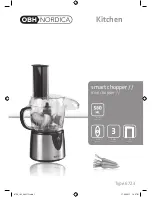
Enhanced Synchronous Serial Interface (ESSI)
ESSI Programming Model
MOTOROLA
DSP56309UM/D 7-15
7.4.2
ESSI Control Register B (CRB)
The CRB is one of two 24-bit, read/write control registers used to direct the operation of
the ESSI; see
on page 7-9. CRB controls the ESSI multifunction signals,
SC[2:0], which can be
used as clock inputs or outputs, frame synchronization signals,
transmit data signals, or serial I/O flag signals.
The serial output flag control bits and the direction control bits for the serial control
signals are in the ESSI CRB. Interrupt enable bits for the receiver and the transmitter are
also in the CRB. The bit setting of the CRB also determines how many transmitters are
enabled (0, 1, 2, or 3 transmitters can be enabled). The CRB settings also determine the
ESSI operating mode.
Either a hardware RESET signal or a software RESET instruction clears all the bits in the
CRB.
The relationship between the ESSI signals SC[2:0], SCK, and the CRB bits is summarized
in
on page 7-24. The ESSI CRB bits are described in the following paragraphs.
7.4.2.1
CRB Serial Output Flags (OF0, OF1) Bits 0, 1
The ESSI has two serial output flag bits, OF1 and OF0. The normal sequence for setting
output flags when transmitting data (by transmitter 0 through the STD signal only)
consists of these steps:
1. Wait for TDE (TX0 empty) to be set.
2. Write the flags.
3. Write the transmit data to the TX register.
Bits OF0 and OF1 are double-buffered so that the flag states appear on the signals when
the TX data is transferred to the transmit shift register. The flag bits values are
synchronized with the data transfer.
Note:
The timing of the optional serial output signals SC[2:0] is controlled by the
frame timing and is not affected by the settings of TE2, TE1, TE0, or the receive
enable (RE) bit of the CRB.
7.4.2.1.1
CRB Serial Output Flag 0 (OF0) Bit 0
When the ESSI is in synchronous mode and transmitter 1 is disabled (TE1 = 0), the SC0
signal is configured as ESSI flag 0. If the serial control direction bit (SCD0) is set, the SC0
signal is an output. Data present in bit OF0 is written to SC0 at the beginning of the
frame in normal mode or at the beginning of the next time slot in network mode.
Summary of Contents for DSP56309
Page 25: ...xxii DSP56309UM D MOTOROLA Figure D 25 Port E Registers PCRE PRRE PDRE D 39 ...
Page 30: ...MOTOROLA DSP56309UM D 1 1 SECTION 1 DSP56309 OVERVIEW ...
Page 47: ...1 18 DSP56309UM D MOTOROLA DSP56309 Overview DSP56309 Architecture Overview ...
Page 48: ...MOTOROLA DSP56309UM D 2 1 SECTION 2 SIGNAL CONNECTION DESCRIPTIONS ...
Page 85: ...2 38 DSP56309UM D MOTOROLA Signal Connection Descriptions OnCE JTAG Interface ...
Page 86: ...MOTOROLA DSP56309UM D 3 1 SECTION 3 MEMORY CONFIGURATION ...
Page 104: ...MOTOROLA DSP56309UM D 4 1 SECTION 4 CORE CONFIGURATION ...
Page 124: ...MOTOROLA DSP56309UM D 5 1 SECTION 5 GENERAL PURPOSE I O ...
Page 125: ...5 2 DSP56309UM D MOTOROLA General Purpose I O 5 1 INTRODUCTION 5 3 5 2 PROGRAMMING MODEL 5 3 ...
Page 128: ...MOTOROLA DSP56309UM D 6 1 SECTION 6 HOST INTERFACE HI08 ...
Page 166: ...MOTOROLA DSP56309UM D 7 1 SECTION 7 ENHANCED SYNCHRONOUS SERIAL INTERFACE ESSI ...
Page 212: ...MOTOROLA DSP56309UM D 8 1 SECTION 8 SERIAL COMMUNICATION INTERFACE SCI ...
Page 241: ...8 30 DSP56309UM D MOTOROLA Serial Communication Interface SCI GPIO Signals and Registers ...
Page 242: ...MOTOROLA DSP56309UM D 9 1 SECTION 9 TRIPLE TIMER MODULE ...
Page 269: ...9 28 DSP56309UM D MOTOROLA Triple Timer Module Timer Operational Modes ...
Page 270: ...MOTOROLA DSP56309UM D 10 1 SECTION 10 ON CHIP EMULATION MODULE ...
Page 302: ...MOTOROLA DSP56309UM D 11 1 SECTION 11 JTAG PORT ...
Page 369: ...C 22 DSP56309UM D MOTOROLA DSP56309 BSDL Listing ...
Page 370: ...MOTOROLA DSP56309UM D D 1 APPENDIX D PROGRAMMING REFERENCE ...
Page 405: ......
Page 409: ......















































